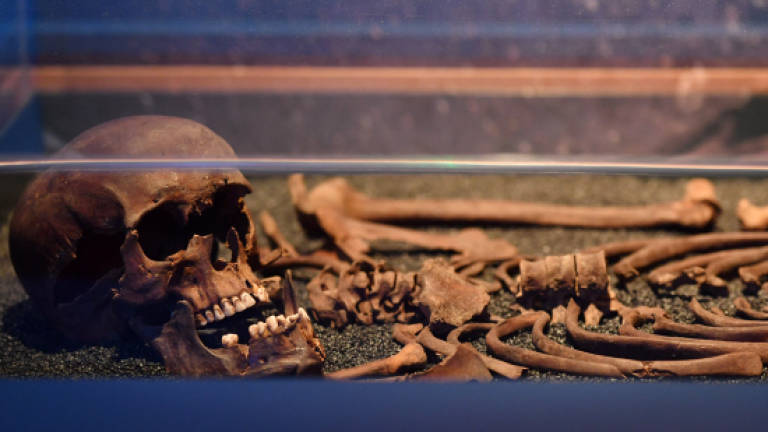Skeletons of London's past exposed in rail line dig

LONDON: Artefacts revealing 8,000 years of human history in London are going on show on Friday after being unearthed during the city's giant underground railway project.
The Elizabeth Line, Europe's biggest infrastructure project, has allowed archaeologists to examine a cross-section of London life along its east-west route beneath the British capital.
Now some 500 objects from the tens of thousands excavated since 2009 in building the line, also known as Crossrail, are being revealed to the public.
"We've managed to take a slice down through London but also across London," said Jackie Keily, the curator of "Tunnel: the Archaeology of Crossrail" at the Museum of London Docklands.
The skeletons of plague victims, humorous Victorian chamber pots, Roman horseshoes, medieval bone ice skates and even 1940s railway company teacups are among the relics on display.
A rare medallion of Roman emperor Philip I from the year 245, only the second example ever found in Europe, is also on show in the free exhibition running until September 3.
The train tunnels were bored up to 40m underground, but the construction of new surface stations also gave archaeologists the chance to explore shallower layers where human activity has left its mark.
Clues to London life
While the central section of the Elizabeth Line runs through the Roman heart of the city, the suburban sections reveal shards of flint from tool-making 8,000 years ago.
Crossrail excavations also turned up 68,000-year-old reindeer antlers and bison bones, plus a fragment of a woolly mammoth jaw.
The exhibition also tells the story of the tunnelling project.
It contains a statue of Saint Barbara, the patron saint of miners, which was placed at tunnel entrances.
As per tradition, the eight tunnel boring machines were given women's names, in this case Ada, Elizabeth, Ellie, Jessica, Mary, Phyllis, Sophia and Victoria.
Crossrail will link London's centre to suburbs to the east and west, plus Heathrow Airport, along 118km of track.
The project is costing £14.7 billion (RM81.6 billion) and employing up to 10,000 people at a time.
It should carry 200 million passengers per year, providing an extra 10 percent of capacity on London's creaking transport network.
The museum exhibition is situated in the Canary Wharf financial district in east London's former Docklands.
Some 28 metres below the murky Thames water, engineers are putting the finishing touches the Canary Wharf Crossrail station.
Covered in scaffolding and boarding, the platforms, 240m long and 30m wide, are in place, and works trains are already rumbling through the tunnels.
"Crossrail is about 80% complete," Camilla Barrow, the deputy project manager for rail systems, told AFP in the westbound tunnel.
The central London tunnel section opens in May 2019 before the full Elizabeth Line service starts in December that year. — AFP